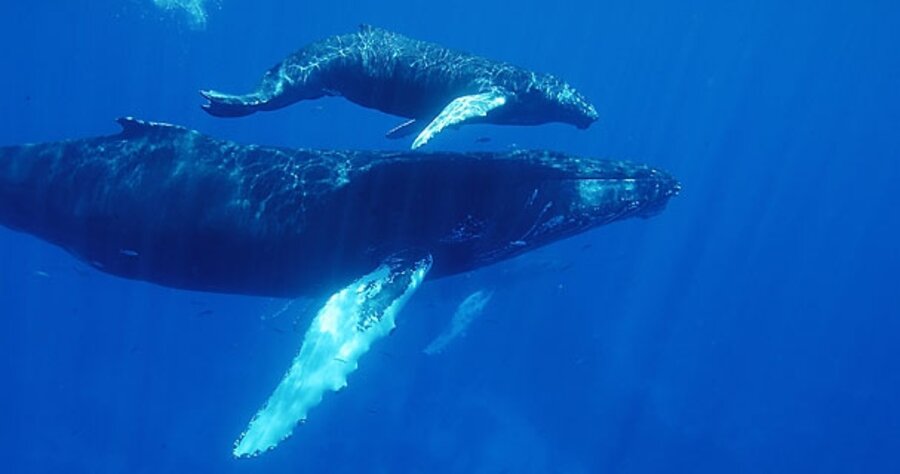Noise pollution threatening marine life
Loading...
Ship engines, seismic air guns, and advanced military sonars are making the world's seas and oceans so noisy that they threaten the lives of marine animals that rely on sound, wildlife experts told a United Nations panel Wednesday.
The experts, who are attending the United Nations Environment Programme’s Convention on Migratory Species conference in Rome this week, are urging governments and businesses to turn down the volume on the high seas.
According to Mark Simmonds, the Science Director of the Whale and Dolphin Conservation Society, human-caused underwater noise "is already triggering a kind of acoustic fog and a cacophony of sound in many parts of the world seas and oceans."
Simmonds's organization published a report on underwater noise pollution [PDF] in 2004.
The noise is more than just bothersome. Most species of cetaceans – that is, whales, dolphins, and porpoises – rely heavily on sound for communicating, foraging for food, and finding mates. According to a report [PDF] released in June by the International Fund for Animal Welfare, the underwater clamor has reduced the acoustic range of the blue whale by nine-tenths. The report, noting that cetacean behavior is notoriously difficult to study, compiles evidence linking loud human-caused noises with mass beachings.
One example: In March 2000, 14 beaked whales, two minke whales, and one dolphin beached themselves on the Bahamas, only hours after after a US Navy tactical sonar exercise. Eight of the beaked whales were returned to the water alive. The Navy accepted blame for the mass beaching. Similar strandings have occurred following military sonar exercses in Greece, Madeira, Hawaii, the Virgin Islands, Spain, the Canary Islands, and the coastal US. Despite mounting evidence that certain types of sonar are deadly to marine mammals, the US Supreme Court last month invalidated key restrictions on sonar use, citing national security concerns.
In other instances, the effects of loud noises on cetaceans are not so immediately obvious. Scientists found that humpback whales exposed to sounds from explosions from construction off Newfoundand did not initially react, but were subsequently much more likely to become fatally entangled in fishing nets. Biologists speculate that the explosion damaged their hearing, leaving them unable to navigate.
One growing concern is the use of seismic air guns, devices towed behind a ship that produce an acoustic pulse, used to detect oil and gas reserves beneath the seabed. A 2004 study found that these pulses can travel more than 1,800 miles.
A study published in October found that ocean acidification will only make the problem worse. Carbon dioxide emissions, in addition to producing a dangerous greenhouse effect, tend to decrease the pH of seawater, making it less able to absorb sound. The authors of the study found that sound absorption has decreased by 15 percent in parts of the North Atlantic and by 10 percent throughout the Atlantic and Pacific.
The UN conference is considering a resolution that would require countries to mitigate noise pollution by mandating quieter engines and banning seismic surveys in areas where marine mammals are known to gather.





